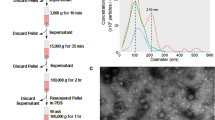Abstract
Breast cancer cells are known to express various proteolytic enzymes, which make them invasive and favour their dissemination to distant sites. However, it is unclear whether breast cancer cells have the ability to produce polymorphonuclear leucocyte elastase (PMN-E). We measured immunoreactive (ir) PMN-E content in the conditioned medium of two breast cancer cell lines, MCF-7 and ZR-75-1, and two normal breast epithelial cell lines, HBL-100 and Hs 578Bst, using a highly specific and sensitive enzyme immunoassay. Furthermore, ir-PMN-E content was determined in tissue extracts from 62 human breast cancers. ir-PMN-E content in the culture medium of MCF-7 cells and ZR-75-1 cells increased as a function of time, regardless of the presence or absence of oestradiol. On the other hand, no detectable ir-PMN-E was secreted into the culture medium of HBL-100 and Hs 578Bst cells. ir-PMN-E was detectable in 59 of 62 tissue extracts prepared from human breast cancers, the concentration ranging from 0.12 to 19.17 micrograms per 100 mg of protein. When 62 breast cancer specimens were categorised into four groups in terms of clinical stage, ir-PMN-E content in breast cancer tissue was significantly higher in stage III (8.90 +/- 5.13 micrograms 100 mg-1 protein) and stage IV (12.19 +/- 5.44 micrograms 100 mg-1 protein) patients than in stage I (1.64 +/- 1.54 micrograms 100 mg-1 protein) and stage II (4.23 +/- 3.74 micrograms 100 mg-1 protein) patients. Breast cancer patients with high levels of ir-PMN-E showed significantly shorter disease-free survival and overall survival than those with low levels of ir-PMN-E at the cut-off point of 8.99 micrograms 100 mg-1 protein. In the multivariate analysis, ir-PMN-E content was found to be a significant prognostic factor for disease recurrence and death in human breast cancer.
This is a preview of subscription content, access via your institution
Access options
Subscribe to this journal
Receive 24 print issues and online access
$259.00 per year
only $10.79 per issue
Buy this article
- Purchase on Springer Link
- Instant access to full article PDF
Prices may be subject to local taxes which are calculated during checkout
Similar content being viewed by others
Author information
Authors and Affiliations
Rights and permissions
About this article
Cite this article
Yamashita, JI., Ogawa, M., Ikei, S. et al. Production of immunoreactive polymorphonuclear leucocyte elastase in human breast cancer cells: possible role of polymorphonuclear leucocyte elastase in the progression of human breast cancer. Br J Cancer 69, 72–76 (1994). https://doi.org/10.1038/bjc.1994.11
Issue Date:
DOI: https://doi.org/10.1038/bjc.1994.11
This article is cited by
-
Overexpression of MTA1 inhibits the metastatic ability of ZR-75-30 cells in vitro by promoting MTA2 degradation
Cell Communication and Signaling (2019)
-
Linking adiponectin and autophagy in the regulation of breast cancer metastasis
Journal of Molecular Medicine (2014)
-
Elafin, an inhibitor of elastase, is a prognostic indicator in breast cancer
Breast Cancer Research (2013)
-
Elevated expression of polymorphonuclear leukocyte elastase in breast cancer tissue is associated with tamoxifen failure in patients with advanced disease
British Journal of Cancer (2003)



